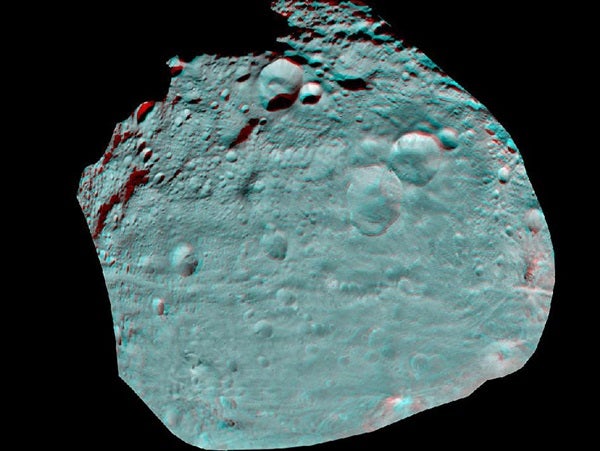Survey orbit is the initial and highest orbit at roughly 1,700 miles (2,700 kilometers) above the surface, which will provide an overview of the giant asteroid.
The primary objective of survey orbit is to image the surface with near-global coverage in visible and infrared wavelengths with the mapping spectrometer, also known as VIR. Dawn also will be using its framing camera to collect image mosaics that complement the VIR spectral data to produce geologic and compositional maps of Vesta’s surface. Ultra-sensitive measurements of the spacecraft’s motion using radio signals will allow improved understanding of the giant asteroid’s gravity field. Dawn’s gamma-ray and neutron detector will continue to collect background data.
The survey phase is planned to last 20 days. Each orbit takes almost 3 days, which will provide the spacecraft seven trips around Vesta. After survey orbit, Dawn will resume thrusting, taking about a month to spiral down gently to its next science orbit for an even closer view. That orbit, known as High Altitude Mapping Orbit (HAMO) begins in late September. Dawn will spend about a month in HAMO, circling around Vesta in half a day, rather than three. Dawn will orbit more than 60 times during HAMO, allowing the camera to fully map the illuminated portion of Vesta at even higher resolution, and enable the science team to generate stereo images.
Survey orbit is the initial and highest orbit at roughly 1,700 miles (2,700 kilometers) above the surface, which will provide an overview of the giant asteroid.
The primary objective of survey orbit is to image the surface with near-global coverage in visible and infrared wavelengths with the mapping spectrometer, also known as VIR. Dawn also will be using its framing camera to collect image mosaics that complement the VIR spectral data to produce geologic and compositional maps of Vesta’s surface. Ultra-sensitive measurements of the spacecraft’s motion using radio signals will allow improved understanding of the giant asteroid’s gravity field. Dawn’s gamma-ray and neutron detector will continue to collect background data.
The survey phase is planned to last 20 days. Each orbit takes almost 3 days, which will provide the spacecraft seven trips around Vesta. After survey orbit, Dawn will resume thrusting, taking about a month to spiral down gently to its next science orbit for an even closer view. That orbit, known as High Altitude Mapping Orbit (HAMO) begins in late September. Dawn will spend about a month in HAMO, circling around Vesta in half a day, rather than three. Dawn will orbit more than 60 times during HAMO, allowing the camera to fully map the illuminated portion of Vesta at even higher resolution, and enable the science team to generate stereo images.










